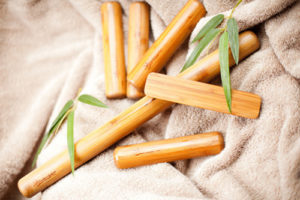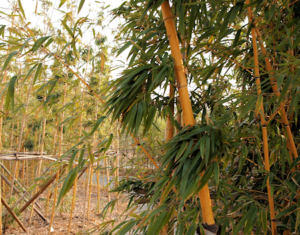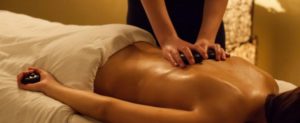Essential Oil Basics
Cornerstone Wellness & Medical Massage Group uses only doTerra and Young Living oils. The following information is usage advice from these companies.
I’m new to essential oils. How do I use them?
Each bottle of essential oil comes with directions for how to use it; these directions vary based on your region. Please consult the product label for appropriate usage directions.
I see the term “carrier oil” used in several places. What is a carrier oil, what does it do, and why should I use it?
A carrier oil is a vegetable oil—such as coconut oil, olive oil, or grapeseed oil—that can be used to dilute essential oils. Carrier oils ensure the appropriate dilution of essential oils as applied topically. Dilution with a carrier oil does not dilute the effect of the essential oil. In fact, it prevents waste due to excessive application. 1% dilution (1 drop per teaspoon of carrier oil; 5-6 drops per ounce)
What is a “hot oil”?
“Hot oils” are oils that can cause a hot or warming sensation when applied to the skin. Examples of hot oils and blends include Cinnamon, Clove, Lemongrass, Oregano, Thyme and OnGuard. For some people, Peppermint’s cooling sensation is also intense.
If you experience a hot or burning sensation or develop a rash, add Biotone unscented or another carrier oil to the affected area as often as needed.
What if I experience skin discomfort or irritation?
If discomfort or irritation occurs, stop using the essential oil and apply carrier oil to the affected area. If a rash occurs, this may be a sign of detoxification. Drink adequate water to encourage the release and removal of toxins in your body. Toxins present in petrochemical-based soaps and skin care products, detergents, and perfumes may trigger some of the detoxification reactions. Consider discontinuing these agents if a reaction occurs. Be aware that water actually drives oil into the skin and eyes. Never use water in an attempt to flush the oil off of the skin, as this may increase discomfort. If essential oil gets in your eye, flush with carrier oil as quickly as possible to alleviate any discomfort. If eye discomfort does not subside within 5 minutes, seek medical attention.
How often can essential oils be applied? How much do I use?
Follow the proper usage instructions printed on each essential oil label. Essential oils are very powerful, so start low and go slow. Excessive use of essential oils may increase the risk for adverse reactions. In most cases, 1–2 drops are adequate, and using more may waste product. Depending on the essential oil, you can gradually build up to 3–4 uses per day, if desired.
Can essential oils be used during pregnancy or while nursing?
As with any medical condition, we strongly recommended that prior to using essential oils, you seek the advice and recommendation of a competent, trained health care advisor who is experienced in essential oil usage. Some people choose to avoid overuse and excessive use of Clary Sage (Salvia sclarea), Sage (Salvia officinalis), Idaho Tansy (Tanacetum vulgare), Hyssop (Hyssopus officinalis), Fennel (Foeniculum vulgare), and Wintergreen (Gaultheria procumbens), as well as the blends and supplements that contain these oils.
Can essential oils be used on children?
Many essential oils are appropriate for use on children but should be diluted with a carrier oil prior to use. Some products come pre-diluted with carrier oil, as indicated on product labels, and are intended for direct application on children. You can dilute 1–2 drops of essential oil such as SleepyIze™, RutaVaLa™, Gentle Baby™, and Peace & Calming® with a carrier oil and apply to the bottoms of the feet.
How does exposure to sun affect essential oil use?
Some essential oils, especially citrus oils, contain natural molecules that react with sunlight (UV light) and cause a sensitivity reaction. Some brands of essential oils and oil blends that contain these compounds come with a warning to avoid sun/UV light for 12–48 hours after applying. Always use caution when starting to use a new oil. If sun sensitivity is a concern, do not apply to areas of the body that will be exposed to sun/UV light within 12-48 hours of application.
What about the use of essential oils with specific medical conditions? Can essential oils interact with prescription medications?
If you have a disease or medical condition or are using a prescription medication, it is recommended that prior to using an essential oil, you consult with a health care advisor who has experience with essential oils. Seek the advice of the prescribing physician and a pharmacist about potential interactions between any medication and essential oils.
doTERRA and Young Living Essential Oils
Deep Blue (muscle and joint support):
Apply directly to tired, aching joints.
Rub on muscles before or after massage to reduce discomfort.
Use with carrier for deep tissue massage.
Breathe Respiratory Blend (respiratory support):
Diffuse into the air, or apply topically to chest and neck or bottoms of
feet to promote clear breathing.
On Guard Blend (immune defense):
Diffuse into air for purification.
Lavender (calms the nervous system, soothes irritated skin):
Diffuse into air to calm anxiety and soothe emotions.
Massage onto back or bottoms of feet.
Peppermint (stimulant **asthma is a contraindication**):
Inhale deeply to invigorate lungs or increase mental alertness.
Apply with lavender to neck and forehead to calm headache.
Melaleuca/Tea Tree (skin support, anti-fungal, anti-microbial):
Apply topically to bottoms of feet and toenails for healthy skin.
Frankincense (skin health, mood booster):
Diffuse into air to lift moods.
Apply topically to neck and forehead with lavender and peppermint
to calm stress and headaches.
Apply to bottom of feet to boost immunity.
Lemon (energizing, anti-depressant **Sunlight/UV sensitivity up to 48 hours**):
Diffuse into air to help life mood and and improve alertness.



